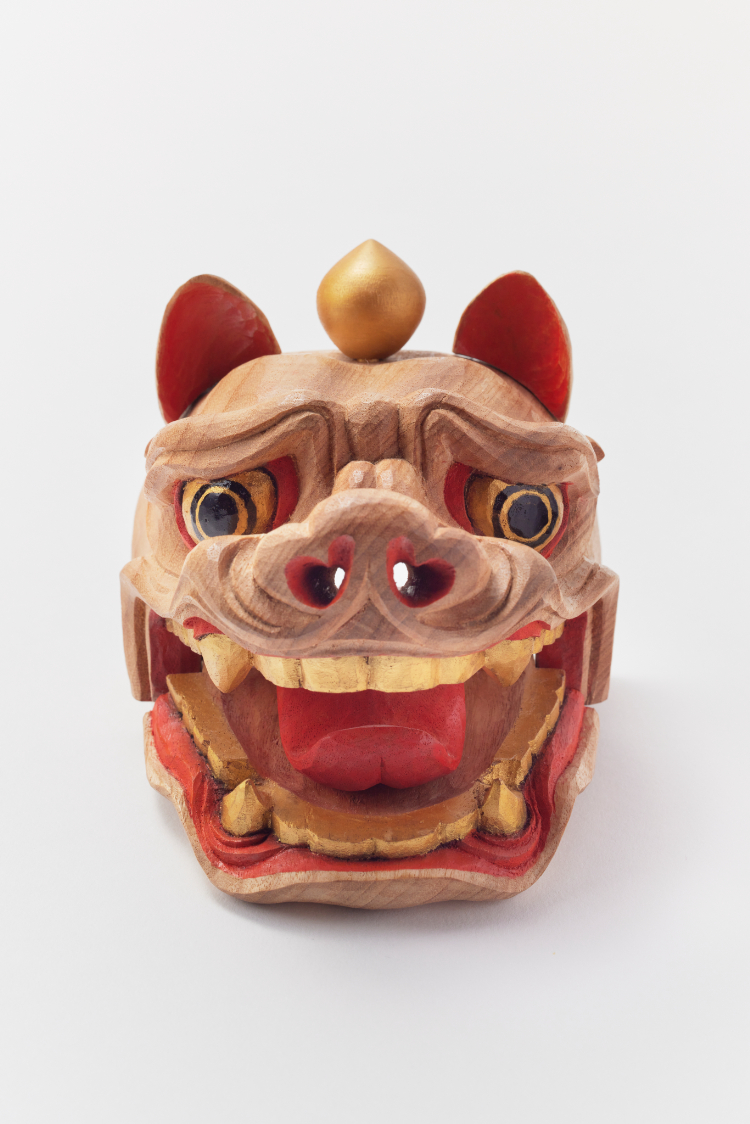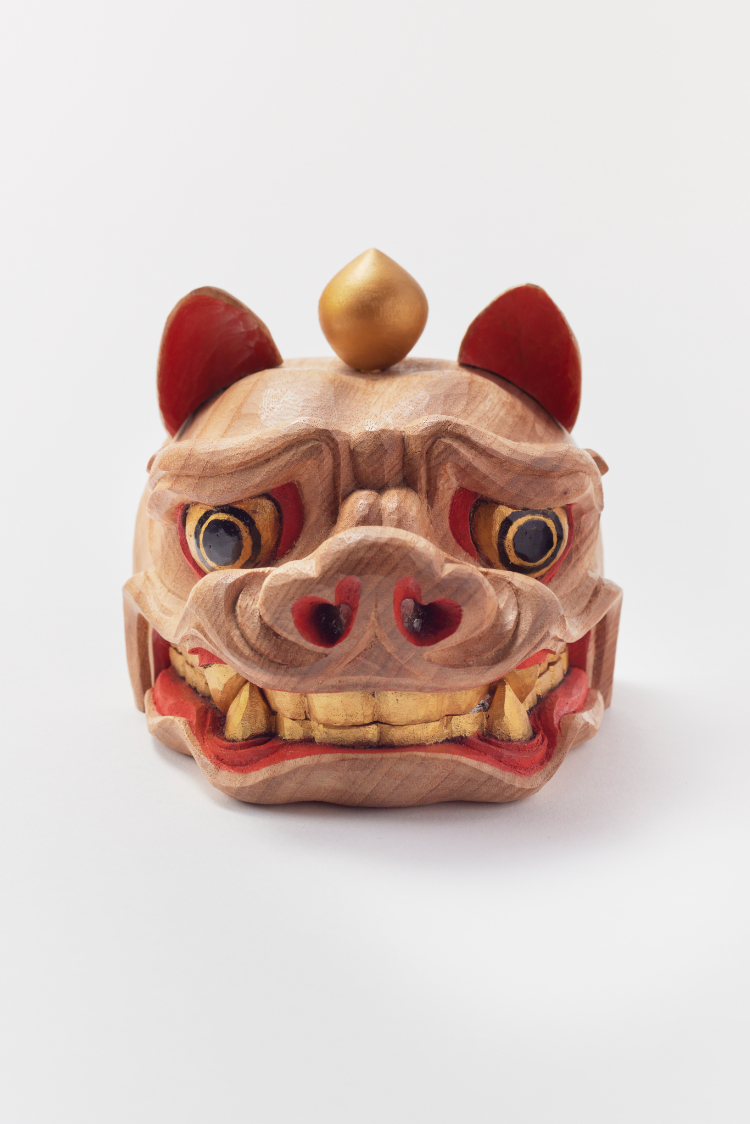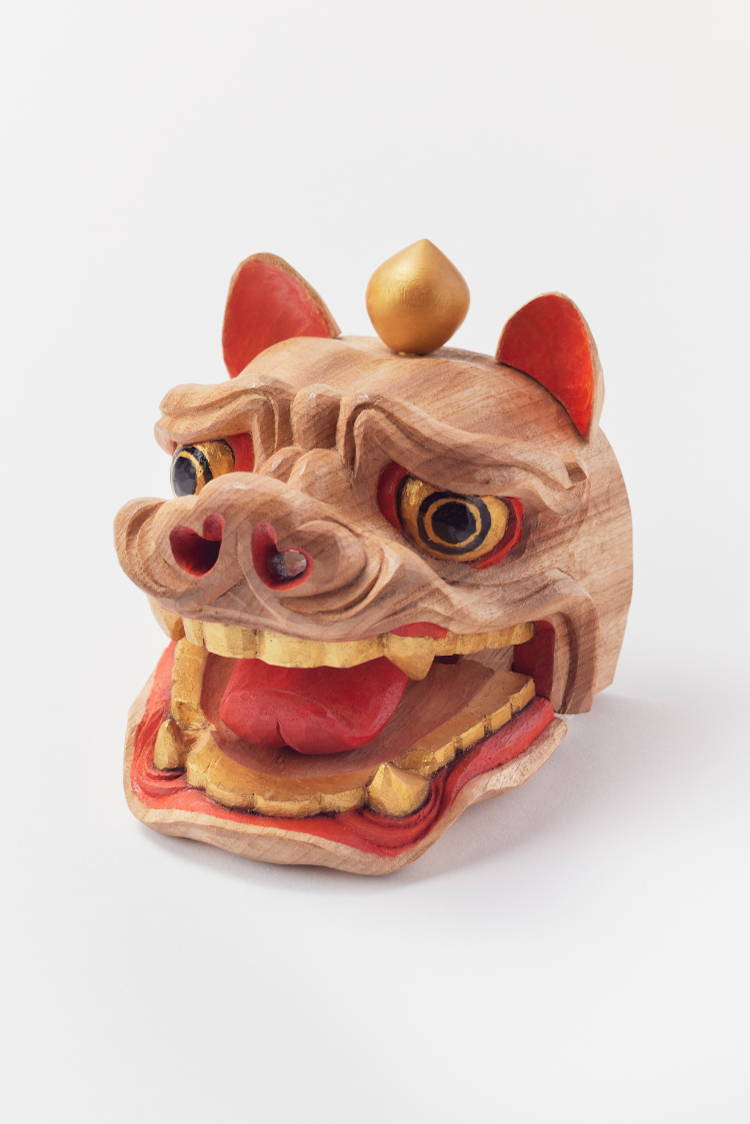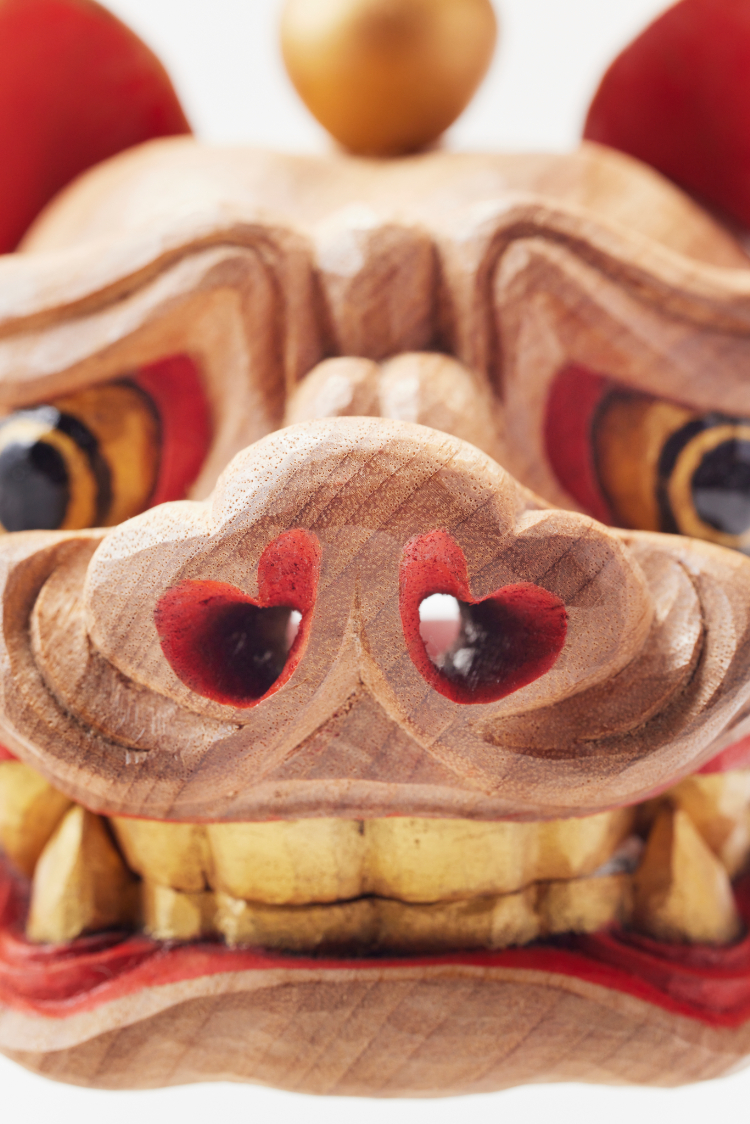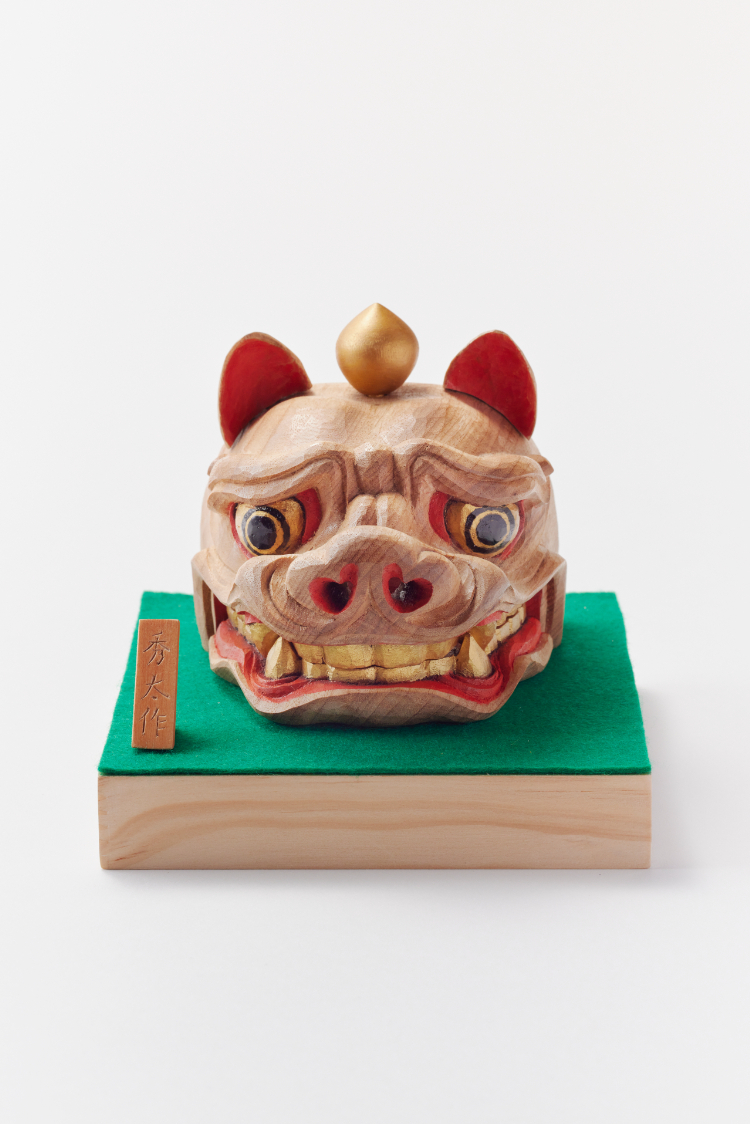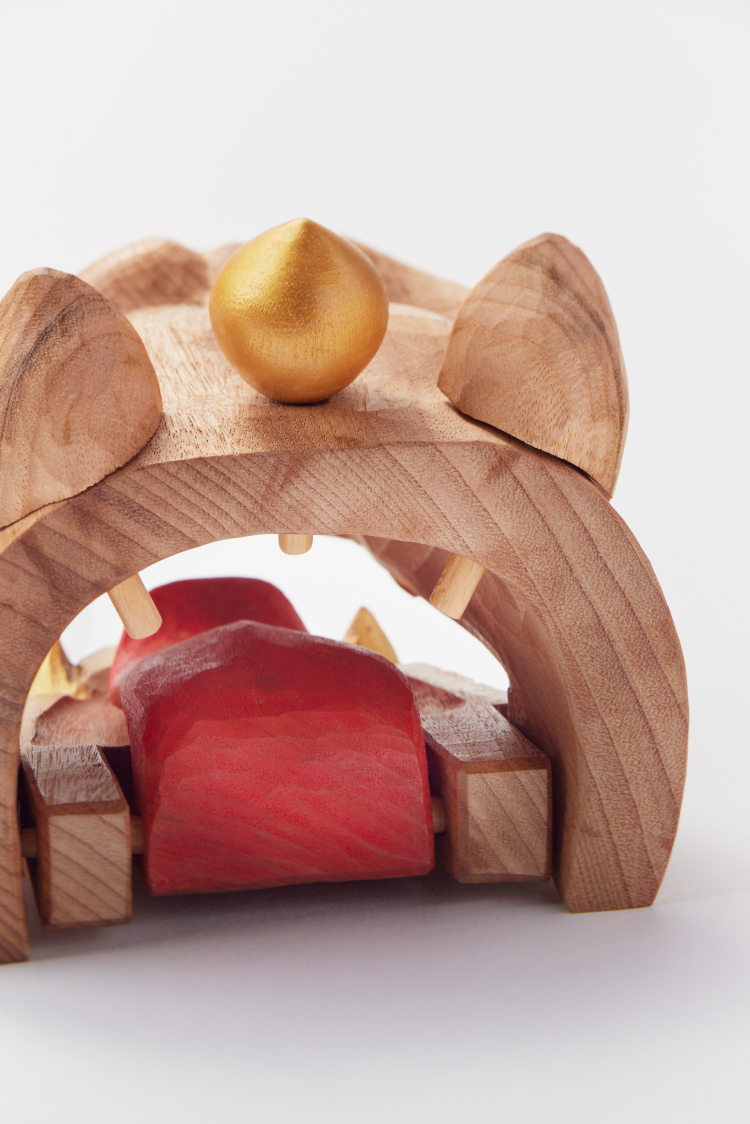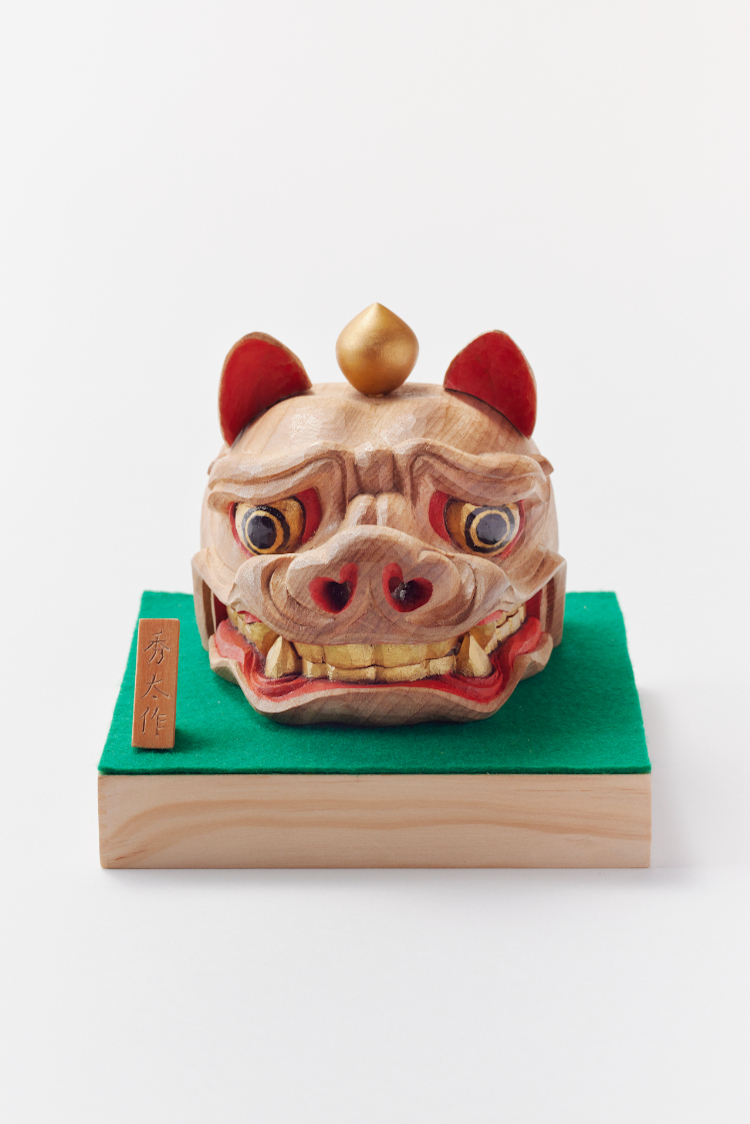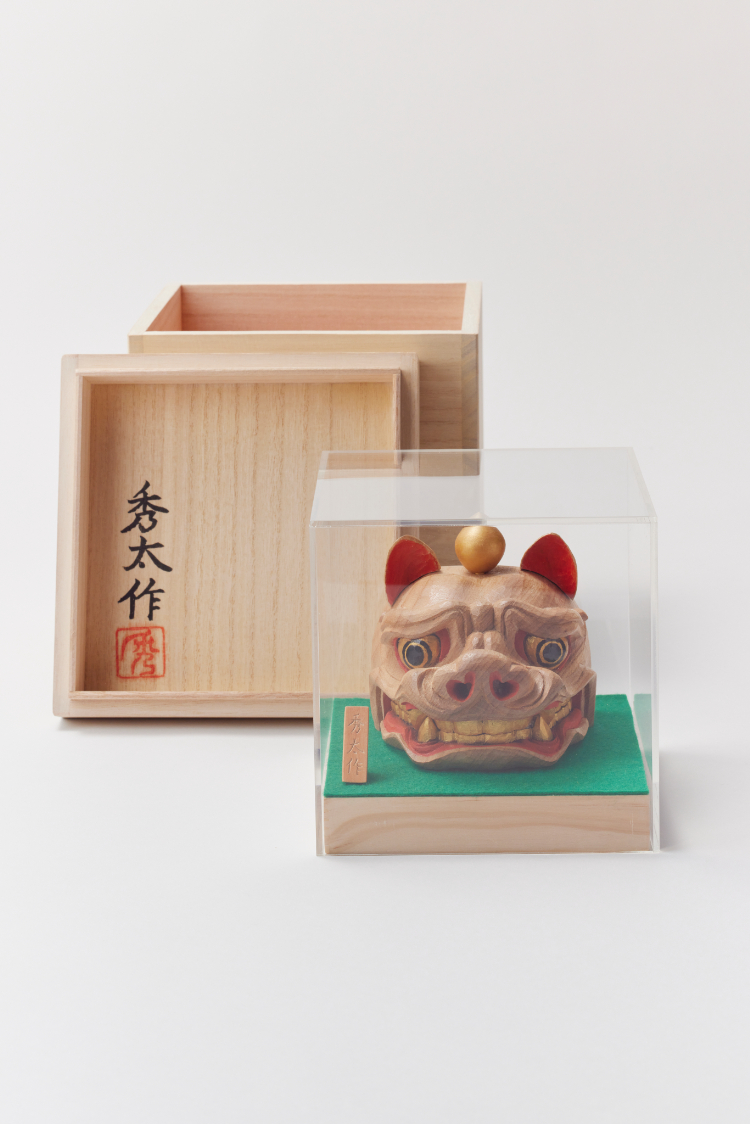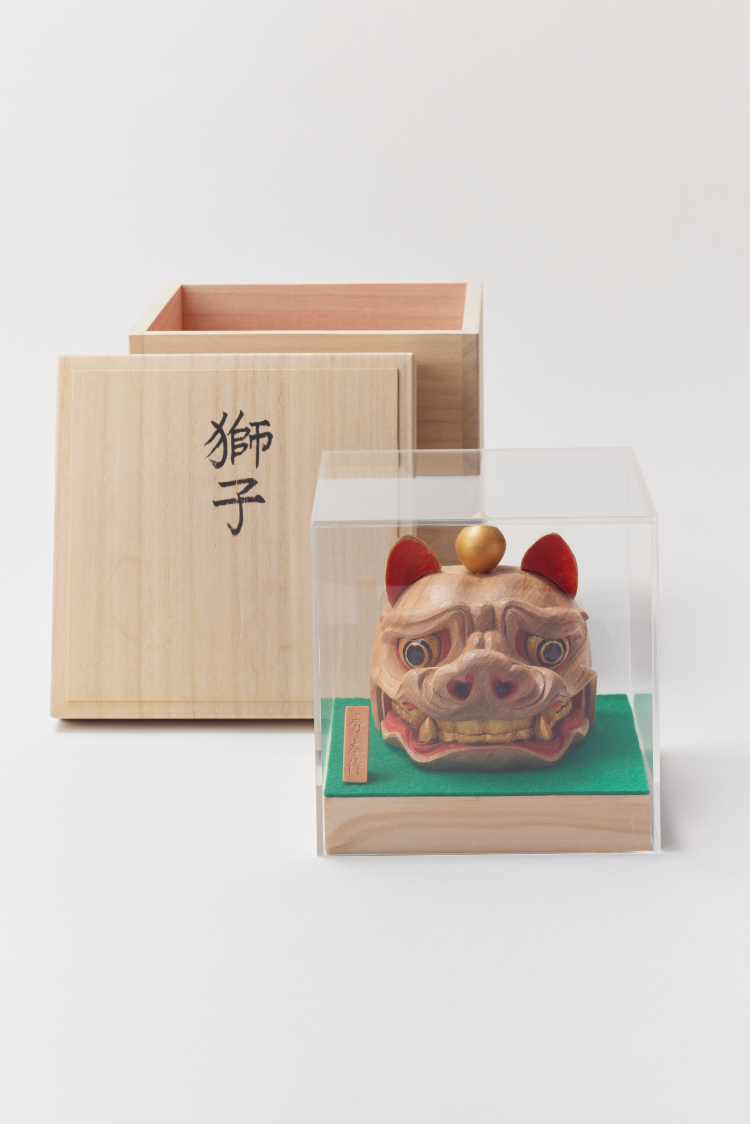Kaiun Shishigashira
27 Edo Moku-Chokoku (Wood Sculptures)Lions retain their shapes in modern forms
such as the shishi-mai (lion dance).
Guarding the main gate (built in 2007 to commemorate 1070 years
since founding of the Naritansan temple sect)
are 16 decorative shishi (lions),
of which six were carved
by the Edo wooden sculpture world’s behemoth, Kitazawa Ikkyo.
And,alongside this astute master carver
was his son and apprentice,
woodcarver of Shinto & Buddhist ritual objects and mask carver,
Kitazawa Hideta,
who took on the carving of the architrave (pillar tip) lions.
It is Hideta who went on to later develop
his technique of hand carving the lion heads of good fortune.
Passed down from the Wu dynasty,
in the era of Empress Suiko,
amidst the traditional performance of ancient music (gigaku),
shishi (lions) played the important role of appeasing
the ground spirits of performance sites
by being the body to step on such sites in dance.
Among such lion masks,
the oldest example in Japan is the one
(preserved in the Shosoin treasure house)
that was used in the ceremony to consecrate (open the eyes of)
the giant Buddha statue of Todai-ji Temple in 752.
Taking the bold features of that lion as a motif,
and adding elements of gorgeous Edo-period lion design,
Hideta’s lion head of good fortune expresses
a flowing elegance of form
with a dynamic appeal redolent of the skills
that came into Japan from along the Silk Road.
Even though minute in detail, the lion’s jaw and tongue both move,
making this dexterously carved piece a truly auspicious charm.
Using just saws, chisels and planes,
Hideta carves the lion head in the beautifully grained
and appropriately hard camphor wood to produce intricate shadows.
Temple or shrine decorations are hung up
outside in their natural bare wood state, exposed to the weather.
And, if such decorations were polished with sandpaper,
their fine woodgrain surfaces would fade,
becoming dull and lifeless over time.
Hence, the use of sandpaper is taken as an amateur’s approach.
Instead, Hideta makes good use of his 250 or so chisels to give
the lion face a smooth finish
that could only be expected from an expert woodcarver.
In addition to gold paint and vermillion-lacquer,
Hideta polishes the wood surface of the lion mask
with wax (excreted from the Ligustrum obtuse insect
onto Ligustrum trees), giving it a sheen
that further reveals the beauty of the wood grain.
Hideta puts everything into his carving work to produce a lion mask,
but it is the lion dancers who puts their spirit into the lion.
Instead of the auspicious fire purification ceremony,
the lion’s teeth are snapped together
to create a chattering noise that wards off evil,
which would doubtless make a lion dance
just the right place for people to come out
and pray for good luck
with a lottery ticket squeezed between their hands.
Working on all sorts of sculptures
from Shinto shrine and Buddhist temple
decorations to noh mask carving,
Kitazawa Hideta breathes life into a variety of wooden sculptures,
and he hopes that his works will not just serve as ornaments
but are used as everyday object by their owners
in order to bring traditional woodcarving
lightheartedly into the mainstream of daily life.
- Kaiun Shishigashira
- Material: Camphor wood
Size: W105mm × D108mm × H100mm
Type: One type only with a pedestal and acrylic case, in a paulownia wood box
*The information on this site is as of May 2024.
*Sizes, colours and shapes of the actual products may differ slightly as they are
handmade.
*Product specifications and suggested retail prices may change without prior notice.

